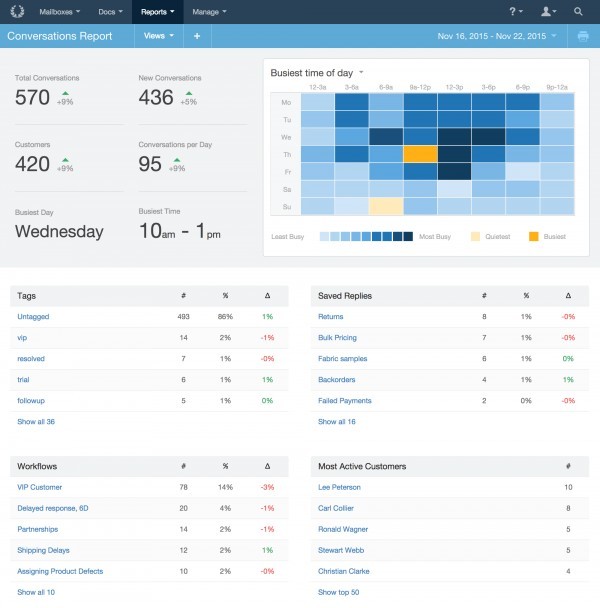Two Easy Changes to Modernize Your Help Desk in 2017
With Halloween behind us and a new year fast approaching, now is the perfect time to consider new ways of bringing your IT department out of the shadows.
To guide you on your path to enlightenment, we’re presenting two related tips that can improve the efficiency of your help desk and organization as a whole.
Our advice will give you a head start on organizational changes that will become increasingly important for SMBs in 2017 and beyond. They’ll also help expose your department’s accomplishments to the light of day where they can begin receiving the recognition they deserve.
Here’s what we’ll cover:
Frame IT Services as Business Services
A Familiar Scenario
Today, a company announces the signing of a major new deal that took many months to complete. As soon as it’s announced, celebrations begin in the sales department, then spread to marketing. Before long, all groups from the C-suite to the support center are celebrating, congratulating one another on a job well done.
Meanwhile in a dark basement corner, the company’s IT support team—working unnoticed—puts the finishing touches on a project. This project, a mobile CRM database integration, is the very one that made that big win possible in the first place.
Scratch below the surface of any company’s big win and you’ll see this phenomenon. Push past the salespeople and their celebratory cake in the breakroom, and you’ll find IT support.

_Traditionally IT departments were uncomfortable in the light of day
(Image: The IT Crowd, Channel 4, .gif from Reddit)_
IT support, service and help desk departments are the unsung heroes of the business world. Even though no deals could be won without being enabled, integrated and supported by IT, they rarely get their commensurate share of the spoils.
This is often the result of management viewing IT departments through an outdated but still commonly used lens, one that makes them look like strict cost centers.
Part of the reason for this lack of recognition is the culture gap between IT and, well, everyone not in IT. IT departments speak a different language, measuring success in uptime and closed tickets, while the rest of the company measures it in closed deals and dollar amounts.
While this clash of cultures was more acceptable in years past, today, with so many businesses undergoing digital transformations, it’s a real problem with real effects on a company’s goals, profitability and competitiveness.
Refocus Your IT Service KPIs
While a “metric” can be just about any numerical representation or measure of an activity, a key performance indicator (KPI) is the term given to only the most significant metrics. KPIs are the primary or key indicators of a department or company’s overall success.
This is an important distinction that needs more attention. Let’s see how this distinction plays out, using the following example of a company that designs and sells software:
The company’s IT service department considers its “open ticket” count a KPI. As the department performs its duties effectively and efficiently, the number of open tickets drops, and so does its open ticket KPI.
But, the IT department is part of a larger company—a software vendor. And the company is in the business of selling software, not closing tickets. Therefore, the “open tickets” metric would not be a KPI for the company as a whole.
However, “total sales per week” could be a KPI for the company. It’s a metric that measures a key value of the company’s performance: sales.
While management may not be too impressed if the service desk’s open ticket KPI drops 50 percent over the course of a quarter, it would certainly notice if sales grew (or declined) by that amount.
If you’re in the service department, you can already see where this going. For everyone else, let’s spell it out:
Although the service department’s KPIs are not the same as the company-wide KPIs—and their connection to the company’s success is less direct and less readily apparent—they’re no less important.
It’s not hard to imagine how even a single open and unresolved ticket could scuttle the company’s big win, depending on the exact nature of the ticket.


_Help Scout’s overview of current help desk operations, including a variety
of metrics and KPIs_
The report “Top 10 IT Service Management Next Practices” (available to Gartner clients) gives several suggestions for improving the use of KPIs within IT service desk contexts. It suggests limiting the list of KPIs to include only those that are, “specific, measurable, attainable, relevant and time-bound (SMART).”
Tracking too many KPIs defeats the purpose of having KPIs in the first place. It makes it difficult to gauge the state of IT service operations at a glance.
Instead, Gartner’s report suggests that service departments should track fewer KPIs. And, each of the KPIs they do track should be tied directly to the company’s overall success:
“Track a few critical services with maximum rigor. These include IT services such as running transactional and financial modules/apps, or other business functions such as production planning and materials management, that have a direct impact on your organizational top line and bottom line and on key business outcomes. These IT services impact your organization’s revenue, cash flow, profitability, productivity and efficiency.”
Tapati Bandopadhyay and Milind Govekar, Gartner Analysts
Frame IT Services as Business Services
The problem described above can be considered a symptom of a larger problem. Namely, IT services and devices tend to be viewed merely as IT services and devices. Of course, there’s no denying that’s what they are, but this perception undervalues the actual contributions those IT services and devices make to the business. Let’s look at a hypothetical example:
Thanks to an accounting error, the API license for your mobile CRM platform has expired. This disconnects your remote sales team, preventing them from inputting new sales or making changes to existing accounts.
Support tickets start rolling in, but you are only alerted to the problem when the open ticket KPI reaches a predetermined number. Meanwhile, the company is losing sales left and right.
While the number of open tickets provides a good benchmark for the IT department, it’s a number that has little meaning outside the IT department. In this scenario it’s easy to see how the open ticket KPI provides a too-little, too-late resolution to the real problem at hand. The root of the problem is that the the KPI was chosen and defined to be relevant to the IT department, not the company as a whole.
The report “Top 10 IT Service Management Next Practices” (available to Gartner clients) suggests that companies design and choose KPIs based on their criticality to the business goals, not the department goals. It continues:
“While identifying the critical services, make it mandatory that criticality be evaluated primarily from the perspectives of business outcomes supported and protected by the IT services, and not in terms of what technical resources go into generating them or how complex they may be.”
Tapati Bandopadhyay and Milind Govekar, Gartner Analysts
What might be a better way to identify and resolve the issue in the above scenario? To answer this, consider what specific problem was created. Did the expiring license create a spike in open tickets? Yes. Did the spike in open tickets directly and immediately affect business operations? No, it didn’t. So what did?
The problem that caused the direct and immediate impact to the business’s bottom line was the inability of the sales team to access the mobile site.
Thus, a better metric that ties directly to a business outcome, could be:
Number of failed login attempts per hour or day
Ratio of successful-to-unsuccessful remote logins per hour or day
Percentage of tickets opened by sales department in past hour
These measures put a business goal—keeping salespeople connected— front and center. They’re much more direct measures of the impact the IT department has on the company’s revenue.
Moreover, they’d each provide advanced warning for a wider variety of issues, such as a down network connection or an overheating server. It would help alert the IT department to many problems aside from an expired license, all of which would demand immediate attention, because all are tied more directly to the company’s profit generating processes.
Next Steps
Ultimately, the suggestions above are about more than getting the credit your department deserves. While recognition is nice, don’t ignore the role it plays in bigger decisions, such as portioning out department budgets or prioritizing which departments will be first to hire more employees.
At the heart of every successful IT support department is an IT support platform, like one of the many listed here. There are many options to consider and a large number of reviews to help you consider your options.
Alternatively, call us at (844) 852-3639, and we’ll help you create a shortlist of products tailored to your needs in a free 15-minute phone consultation.